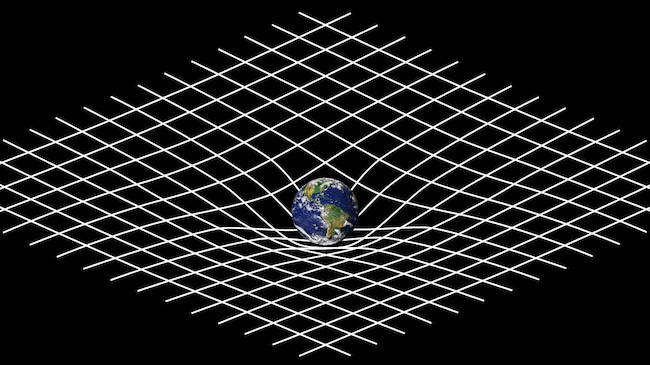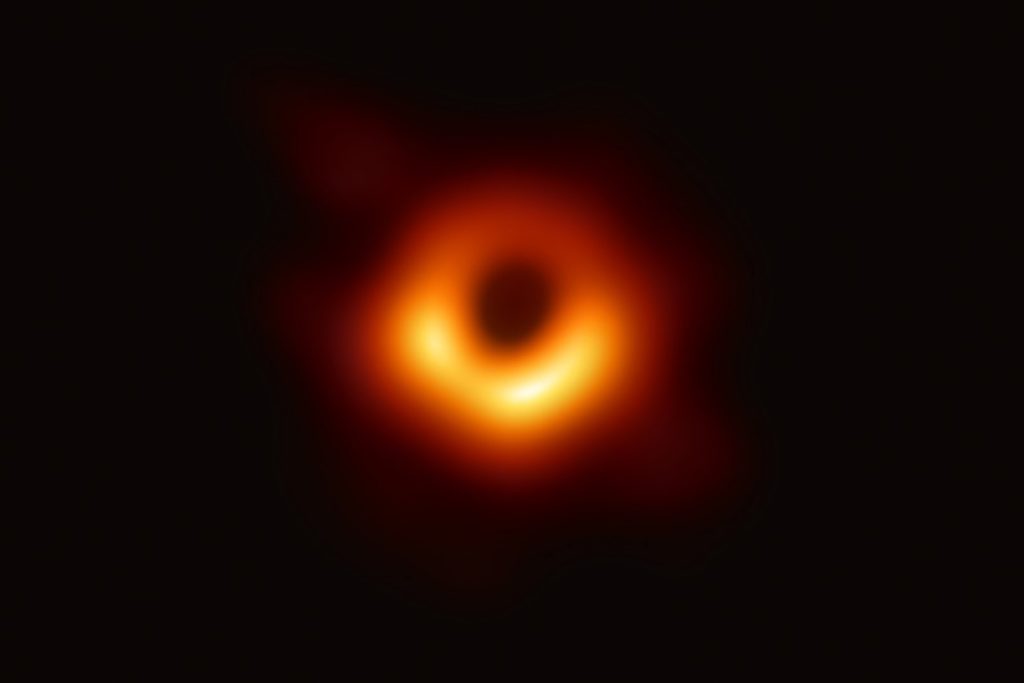Everyone seems to be talking about the recently released picture of a black hole. But what does this mean? How can we take a picture of a black hole? What even is a black hole?
We talked to Assistant Professor Mahito Sasada who worked on the Event Horizon Telescope project to help us try and explain the image of the black hole. Some responses have been edited for clarity.
Firstly, what is a black hole?
Sasada: “The region where the black hole is, is black because there is no light. Light cannot escape from the black hole to anywhere, but we can see light in other regions [of space]. [Black holes] suck everything in because of huge gravity power. They are very heavy and other matter goes to that heavy object, caused by Einstein’s theory of General Relativity. Space is bending, so matter falls into that heavy something.”
Space is not just an empty void but is full… of stuff we’re not even sure of yet! One thing we can use to visualize what is out there is called ‘spacetime’[1]. The shape and structure of this can be changed depending on what is present. For example: a lake looks flat when it is calm, but the waves crash and interact with the shore and fish swimming inside can disturb the water.

Caption: Space can bend when there is a heavy object, like a planet or a black hole. Credit: NASA's Imagine the Universe
But if we can't see the black hole, how can we take a picture of it?
What we can see in the image is light around the black hole. As Professor Heino Falcke (chair of the Event Horizon Telescope Science Council) said in the European press conference: "the fact that you see nothing in the centre is actually quite significant".
Sasada: “[The Event Horizon Telescope] used many telescopes to create one Earth-sized telescope. We took an image of the ring, you can see the ring, and we conclude that it is around black hole. Light photons circulate around a black hole. The black hole wears a [light] sphere like clothes. That ring is made by the bending light photons. The emitter of the light would be a hot gas with over 6 billion Kelvin distributing around the black hole. But actually, we don't know where the emitter is.”
Why is the ring so bright and the rest of the photo so dark (not including the black hole)?
Sasada: “To take the picture we use radio techniques only looking at small-scale emissions, because of an extremely sparse baseline coverage (very sparse locations of telescopes on the Earth). The Event Horizon Telescope cannot detect medium or large-scale light emissions around the black hole. For radio we don’t draw a picture directly, but the picture is made using software. The observational data is not a picture so we should transform the image.”
Light travels in waves of different lengths. If the telescope could see all the wavelengths of light the photo would be blurry. These special telescopes were very specific in the wavelengths they searched for.
Why haven't we been able to take a picture before now?
Sasada: “This was not a camera where we can take a picture easily. Radio interferometry was born 30-40 years ago.
To make a scientifically-robust image and the information shared between the members of the Event Horizon Telescope had to be extremely precise and accurate. Think about the last time you did a group project and try to remember if it all went smoothly!

The Black Hole M87. Credit: Event Horizon Telescope collaboration et al. via National Science Foundation
What was your role in the project?
Sasada: “Mainly I worked with my teammates, especially in Japan, on developing the software to make the images. I am a member of the NAOJ: National Astronomical Observatory of Japan.”
If someone had a telescope in their back garden could they see the black hole?
The short answer is no. This was a huge project of 8 telescopes around the world pointed at this galaxy. They made a planet-sized telescope, so unless you have a planet-size telescope in your back garden you won't be able to see it!
Sasada: “We have other reasons which are more technical, but the Earth size telescope was a big reason we can see the black hole.”
What is an Event Horizon and why was it chosen as the name of the project?
Sasada: “You know light cannot escape from the black hole. The event horizon is the threshold. Outside the event horizon light can escape, inside the event horizon light never escapes. We can see outside the event horizon but not inside. [Event Horizon Telescope] was named by the directors of the project. The dream was that we want to see the event-horizon-scale regions.”
To imagine what this might look like on Earth, think of it like the edge of a whirlpool that you cannot escape from!
Does this black hole have a name?
Sasada: “The black hole belongs to the M87 galaxy so we just call it M87 or M87* It was named by Messier- the person who numbered each diffused object in space”
Charles Messier was a French astronomer that identified over 100 notable objects in space from mid-1700’s-1800’s.
We would like to thank Assist. Professor Sasada for his enlightening comments. With more powerful technology in our hands we can discover amazing things every day. Maybe tonight we can look up at the sky and imagine this black hole about 55 million light years away!
Originally written by Emma Buchet
[1] For more info check out https://www.science.org.au/curious/space-time/gravity

 Home
Home